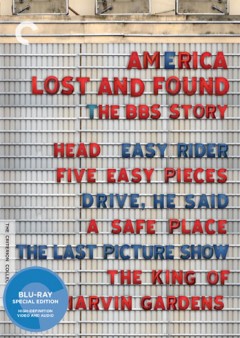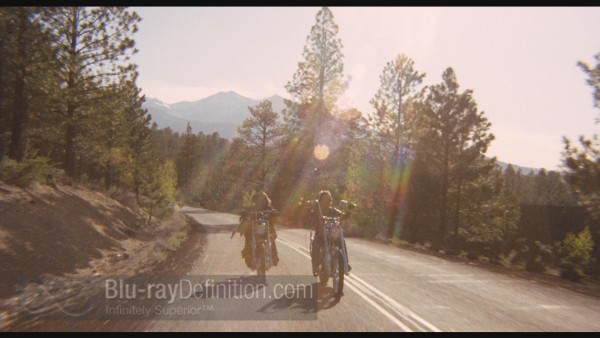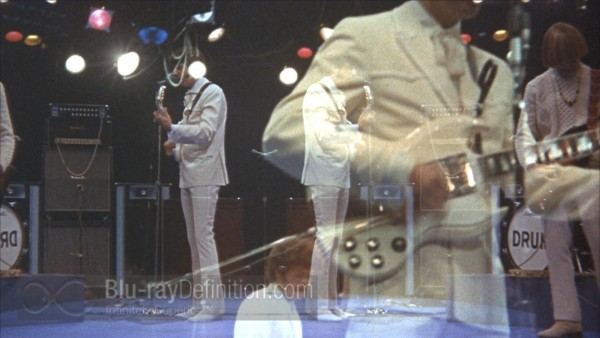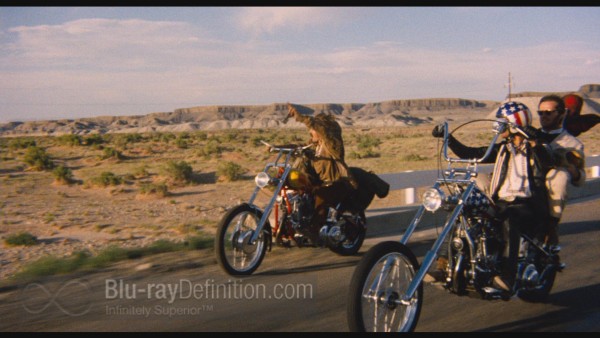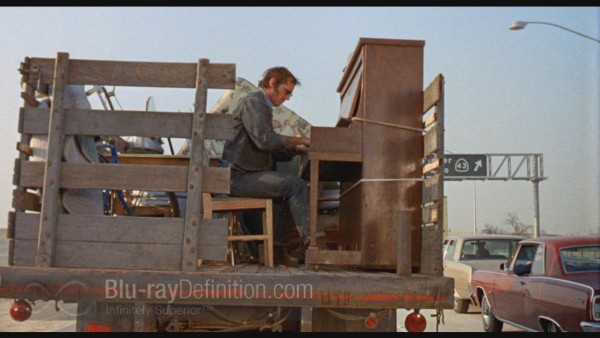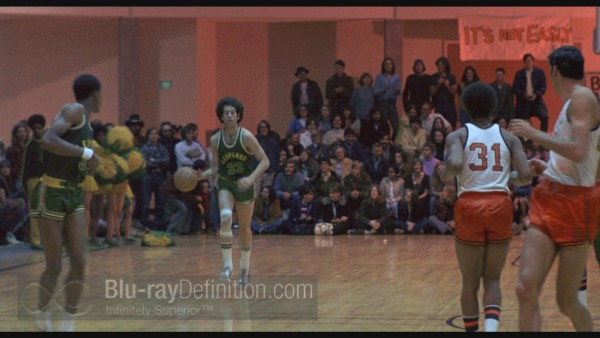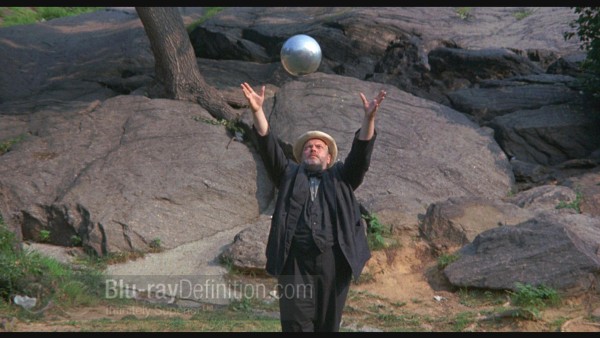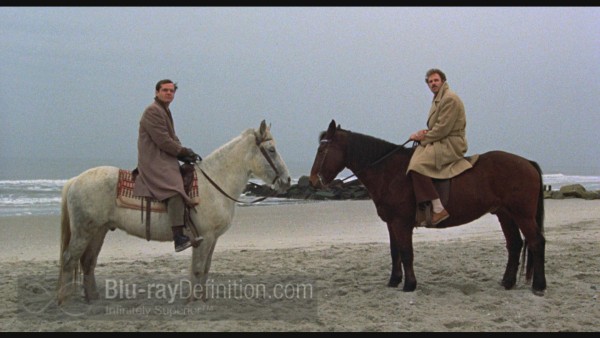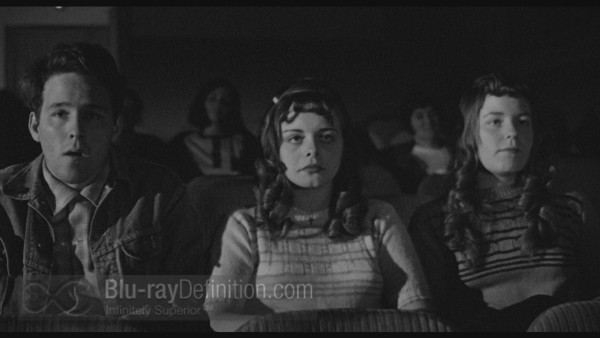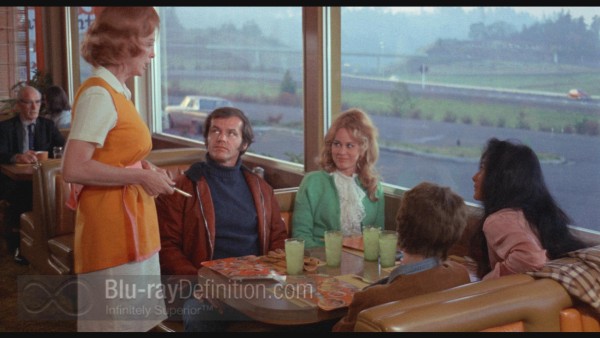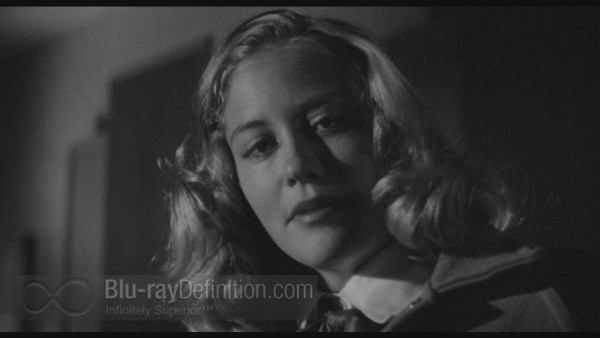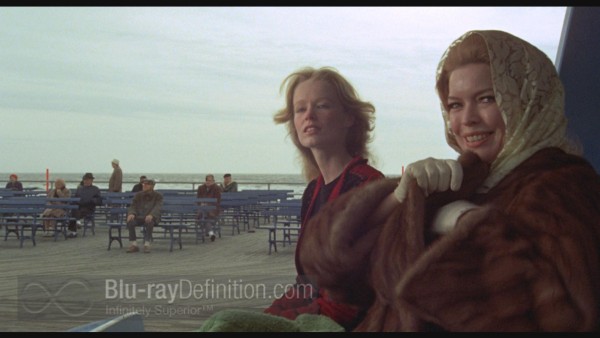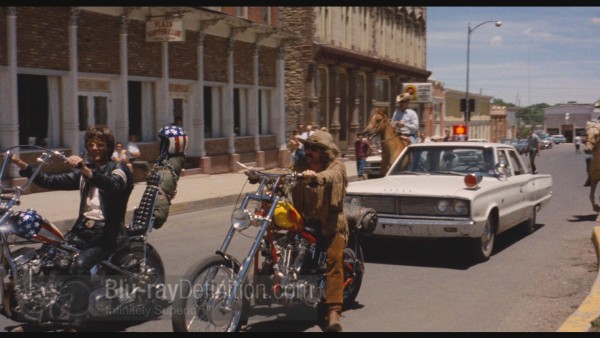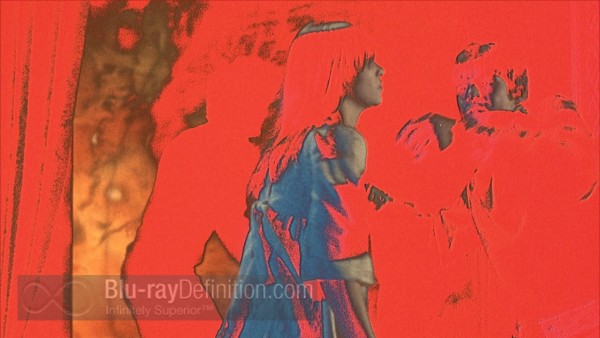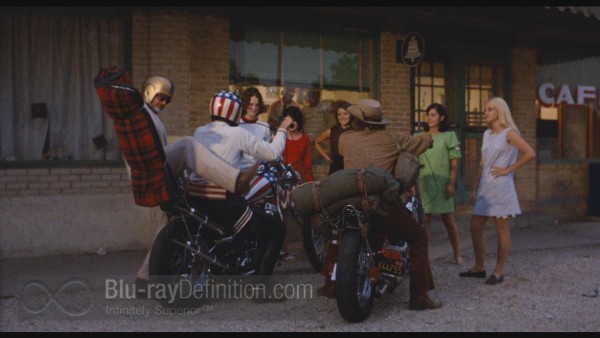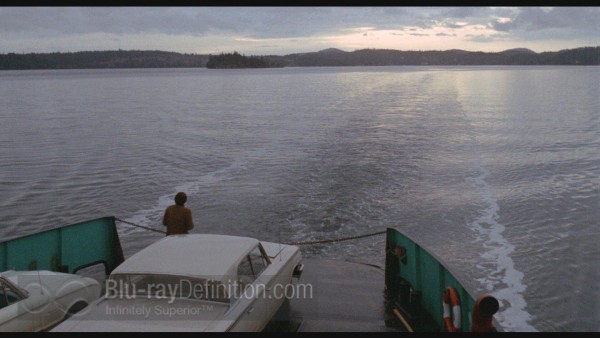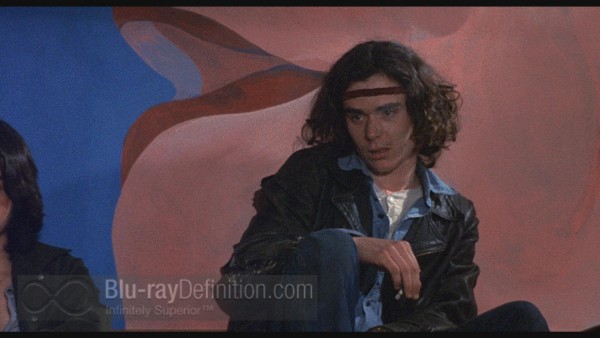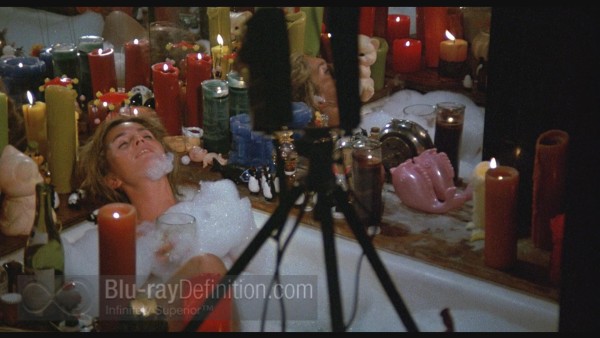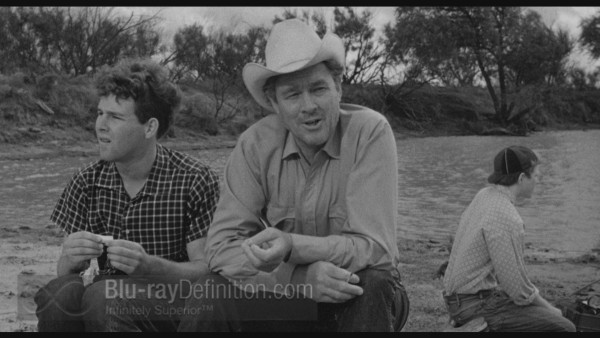- Aspect Ratio: 1.78:1, 1.85:1
- Video Codec: AVC/MPEG-4
- Resolution: 1080p/24
- Audio Codec: PCM 2.0 (48kHz/24-bit), DTS-HD Master Audio 5.1(96kHz/24-bit), uncompressed monaural
- Subtitles: None
- Region: A
- Rating: Not Rated
- Discs: 6
- Studio: Criterion Collection
- Blu-ray Release Date: November 23, 2010
- List Price: $129.95
[amazon-product]B003ZYU3SC[/amazon-product]
Purchase America: Lost and Found on Blu-ray at CD Universe
Shop for more Blu-ray titles at Amazon.com
Overall
[Rating:4.5/5]
The Film (s)
[Rating:4/5]
Video Quality
[Rating:3.5/5]
Audio Quality
[Rating:2.5/5]
Supplemental Materials
[Rating:4.5/5]
Click thumbnails for high-resolution 1920X1080p screen captures
(Screen captures are lightly compressed with lossy JPEG thus are meant as a general representation of the content and do not fully reveal the capabilities of the Blu-ray format)
The Film(s)
[Rating:4.5/5]
For an all-too-brief run during the late 60’s and early 70’s, the flame of BBS studios burned brightly. Producers Bob Rafelson, Bert Schneider, and Steve Blauner, the “B, B, and S” of the studio’s acronym, collaborated with some of the best young acting and directing talent of their time including Jack Nicholson, Dennis Hopper, Ellen Burstyn, Bruce Dern, Karen Black, Peter Bogdanovitch and Peter Fonda. The seven films in this box are hits and misses but all are worth watching. Since the Criterion Collection is only available as a set, the ratings will apply to the set as a whole. I have seen each film in its theatrical first run, and 40 years later, I am still astounded by BBS’s innovation and risk taking. For those unfamiliar with any or al of these movies, brief commentaries follow:
Head (1968), for the uninitiated, refers to a recreational drug user. Head begins like the Beatles’ “Help”, but further similarities are dispelled as a Monkees concert cuts away to Viet Nam war footage. The Monkees, a TV rock band creation of producer/director Bob Rafelson, are the nominal stars of this movie, but Rafelson is always pulling the strings. This rambling, often incoherent film has direct references to other famous films like Lawrence of Arabia, Humoresque, and Body and Soul. It also attempts cinematic psychedelia in the manner of the era’s popular television show Rowan and Martin’s Laugh-In. Numerous cameos pepper this production, including Dennis Hopper, Jack Nicholson (co-writer and producer), Victor Mature, Annette Funicello , Sonny Liston (former heavyweight boxing champion) and Frank Zappa. In the end, you are watching a nonlinear work that paved the way for its successors.
Easy Rider (1969) is a man who is supported by a prostitute. While this reference may not perfectly suit this film, Easy Rider is clearly the iconic “road movie” of its time with custom choppers serving as horses. This odyssey follows an odd coupling of an addled Billy (Dennis Hopper AKA Buffalo Bill) and a laconic Wyatt (Peter Fonda AKA Captain America). Easy Rider springs to life when Jack Nicholson, an alcoholic Texas attorney, George Hanson, joins this duo on its ill-fated tour of the American South. The Hopper-Fonda-Nicholson journey, fueled by drugs and easy virtues, provides a cinema verité panorama of 1960’s America. Easy Rider exposes the stereotypes, mainstream principles, and social conflicts that marked this turbulent era. The road show peaks in a Mardi Gras sequence complete with a simulated LSD trip and concludes in senseless murder.
Five Easy Pieces (1970) opens mid-stream in the life of Bobby Dupea (Jack Nicolson). Dupea is a California oil-rig worker, living with a gum-chewing big-haired waitress Rayette (Karen Black) with a penchant for Tammy Wynette songs. We learn that Dupea was a child piano virtuoso but we don’t find out how he arrived at a California oil field. A visit to the dysfunctional and musically overrun Dupea family in the tranquil Pacific Northwest answers few questions about Bobby’s past. The obvious mismatch between Rayette and the Dupeas underscores the fact that Bobby will never achieve a meaningful relationship or life. Unlike the many “feel good” films of this era, the lack of resolution at its conclusion is emblematic of this anti-hero’s life. The diner sandwich scene is the best known moment of this well-crafted movie, the original failure-to-launch epic.
Drive, He Said (1970) shows a college campus in the throes of the Vietnam-era turmoil of sex, drugs, and rebellion. Except for Karen Black and Bruce Dern, the cast are relative unknowns. Disaffection with the war and contemporary mores, plays out against the incongruous back drop of college basketball. The relationship between star hoopster Hector Bloom (William Tepper) and lascivious faculty wife Olive (Karen Black) hearkens back to The Graduate. The full frontal nudity of the locker room shower scene has overtones of the contemporary musical Hair. Michael Margotta, an Actor’s Studio graduate, gives an overwrought portrayal of Gabriel, the chief campus rebel and film’s anti-hero. This is a much darker film than some of its contemporaries like “RPM,” and like many counter-culture films of this era, Drive, He Said has not aged particularly well.
A Safe Place (1971) is director Henry Jaglom’s attempt to emulate avant-garde European directors like Alain Resnais and Michelangelo Antonioni. It features an odd pairing of ingénue Tuesday Weld (Susan/Noah) as a supremely photogenic, possibly schizophrenic young woman and screen veteran Orson Welles, a Central Park magician, possible father figure and guide to the afterlife. The saving grace of this movie is its use of New York as a fascinating setting for its primal themes. Jack Nicholson (Mitch) makes a quirky cameo appearance as an on-again, off again-lover. Philip Proctor (Fred) is Susan’s boy-friend/voyeur who is perpetually off-balance and out of his element throughout the film. The ambiguous ending recalls many of the French “nouvelle vague” films of this period: Does Susan/Noah really fly, does she drown, or did she ever really exist? A Safe Place is more a study in cinematic technique than actual substance.
The King of Marvin Gardens (1971) is set in pre-Casino Atlantic City. David (Jack Nicholson) is a nerdy, depressing talk show host. His older brother, Jason (Bruce Dern), “the King” is a self-styled entrepreneur with delusions of grandeur, pitching an Hawaiian casino resort to Japanese investors. The interplay between the brothers is neither close nor comfortable, as realized in a remarkable image of Dern and Nicholson, facing each other on horseback on the deserted Atlantic City beach. The insertion of Sally (Ellen Burstyn), the aging lover and Jessica (Julia Anne Johnson), her beautiful step-daughter, create an enigmatic ménage-a-trois. A campy rendition of Jessica’s dance routine in the style of the Miss America Pageant literally stops the show. The backdrop of the Boardwalk at season’s end creates a perfect foil to the futility of impossible dreams.
The Last Picture Show (1972) is set in a small, dusty 1950’s Texas town. The closing of the town’s only movie theater is a metaphor for its gradual extinction. This is the only film noir in the collection but, in many respects, is its jewel in the crown. The extraordinary cast includes established actors (Ben Johnson, Cloris Leachman, Ellen Burstyn) and promising newcomers (Jeff Bridges, Randy Quaid, Timothy Bottoms, and Cybill Shepherd). The lives of these characters continuously interweave around the themes of vanity, sex, love, death, and forgiveness. It is fascinating to watch the metamorphosis of Jacy (Shepherd) from demure high school senior to a wanton sex object. There are echoes of every John Wayne western when Sam the Lion (Ben Johnson) gets in front of the camera. The most remarkable thing about this movie is its realistic recreation of an era that preceded the domestic invasion of American households by the small screen. While The Last Picture Show is the longest film in the series, director Bogdanovich benefits from the tight editing of Donn Cambern and atmospheric cinematography of Robert Surtees.
Video Quality
[Rating:3/5]
Considering that none of these films were shot in the modern era of high-definition, the remastering process is nothing less than extraordinary. This is most successful in the recreation of Five Easy Pieces and King of Marvin Gardens and least in The Last Picture Show. Movies of this era have an inevitable degree of graininess; however, this does not detract from the overall presentation. The home video quality of the New Orleans scene in Easy Rider, as we discover from the supplemental interviews, was actually the circumstantial consequence of less accomplished photographers working with hand-held 16 mm cameras. It is an unqualified pleasure to observe the presentation of America’s vast open spaces by Laszlo Kovacs, the cinematographer in several of these issues. The so-called special psychedelic effects of Head might have been cool in the ‘60’s but look low tech today.
Audio Quality
[Rating:2.5/5]
For most potential purchasers, this will be the main shortcoming of this set. The original soundtracks are really the culprits here, being recorded in unvarnished monaural sound. While some of the discs offer “enhanced” DTS-HD-Master Audio, such efforts to improve the sound evoke the “lipstick on a pig” analogy. I listened to all of the films in mono with discrete effects from my surround processor. While the sound tracks will never be demonstration material, the dialogue channel is quite clear which is vital to understanding some of these masterful scripts. In fact, the only film that suffers at all from soundtrack limitations is Easy Rider and its trail-blazing use of inserted rock single tracks.
Supplemental Materials
[Rating:4.5/5]
For baby boomers who might or might not remember the ‘60’s, it is a revelation to get the skinny on the creative process surrounding these releases. The most generous supplements accompany Easy Rider and suggest that there was more coherence to its making than the movie would have suggested. The Head disc contains a recent documentary on the BBS studio that serves all of the other discs quite well. For those unfamiliar with the original issues, this set includes a booklet that is not only well written but would bring newcomers up to speed in no time. It should serve as a model for other studio compilations.
The Definitive Word
Overall:
[Rating:4.5/5]
America Lost and Found is an unprecedented entry into the hotbed era of cinematic creativity, occasionally dubbed the “summer of love.” Yes, drugs were involved. Yes, some of the time, the producers and directors did not know what they were doing. Yes, the risk-taking yields some uneven creations. But in the end, it is hard to ignore what BBS accomplished with these potential liabilities. You get the opportunity to see young stars in their ascendancy and the obvious advantage of their Actors’ Studio workshop experience . You also get ground-breaking cinematography, most notably by Laszlo Kovacs. The price of entry is quite reasonable considering the substantial viewing returns on investment. As either a survivor or casualty of this cinematic era, I can assure potential buyers that you will not get a better presentation of these films anywhere else.
Additional Screen Captures:
[amazon-product]B003ZYU3SC[/amazon-product]
Purchase America: Lost and Found on Blu-ray at CD Universe
Shop for more Blu-ray titles at Amazon.com
Overall
[Rating:4.5/5]
The Film
[Rating:4/5]
Video Quality
[Rating:3.5/5]
Audio Quality
[Rating:2.5/5]
Supplemental Materials
[Rating:4.5/5]


